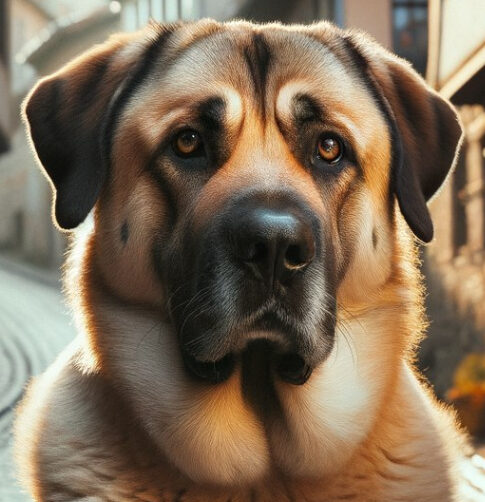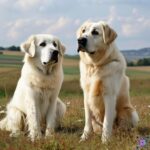Introduction
The Anatolian Shepherd mix is a fascinating topic for dog enthusiasts and potential pet owners alike. Known for their loyalty, intelligence, and strong guarding instincts, Anatolian Shepherds are often crossed with other breeds to create unique mixes that inherit the best traits from both parents. In this detailed guide, we explore everything you need to know about the Anatolian Shepherd mix—from their history and characteristics to their care requirements and suitability as pets. Whether you’re considering adopting one or are simply curious, this article provides a deep dive into all aspects of this remarkable hybrid.
Definition and Overview
What Is an Anatolian Shepherd Mix?
An Anatolian Shepherd mix refers to a dog that has one Anatolian Shepherd parent and another parent from a different breed. These mixes are bred intentionally or occur naturally, resulting in dogs that often combine the Anatolian’s guarding instincts with the unique traits of the other breed.
Why Are Anatolian Shepherd Mixes Popular?
- Versatility: They inherit adaptable traits that make them suitable for various roles, including guarding, companionship, and working.
- Diversity in Traits: Depending on the other parent breed, Anatolian Shepherd mixes can have a wide range of appearances, temperaments, and abilities.
- Unique Companions: Their mixed heritage often results in distinctive dogs with one-of-a-kind personalities and looks.
Historical Background
Origins of the Anatolian Shepherd
The Anatolian Shepherd has a long history as a livestock guardian in Turkey, where they were bred to protect flocks from predators. These dogs are valued for their independence, intelligence, and strong protective instincts.
Evolution of Mixes
The intentional breeding of Anatolian Shepherd mixes gained popularity as dog owners sought to combine their unique guarding traits with other desirable characteristics, such as higher trainability or a more sociable temperament.
Common Breeds Crossed With Anatolian Shepherds
- German Shepherd: To enhance trainability and versatility.
- Great Pyrenees: For a blend of guarding instincts and calm demeanor.
- Labrador Retriever: To create a mix with a friendly and outgoing nature.
- Australian Shepherd: For an agile and intelligent working dog.
Key Features and Characteristics
Physical Traits
Anatolian Shepherd mixes can vary widely in appearance, but common features include:
- Size: Medium to large, depending on the other breed.
- Coat: Often double-layered, with textures ranging from smooth to coarse.
- Color: Colors can include fawn, brindle, white, black, and various combinations.
Temperament
- Protective: Most mixes retain the Anatolian’s strong guarding instincts.
- Independent: They may show a degree of independence, especially if the other breed is also self-reliant.
- Affectionate: Depending on the mix, they can be highly affectionate and family-oriented.
- Intelligent: Their intelligence makes them quick learners but can also lead to stubbornness.
Lifespan and Health
- Lifespan: Typically ranges from 10 to 14 years.
- Health Concerns: Common issues include hip dysplasia, bloat, and genetic conditions inherited from the parent breeds.
Benefits and Importance
Why Choose an Anatolian Shepherd Mix?
- Unique Combination of Traits: They often combine the Anatolian’s guarding abilities with the complementary traits of the other breed.
- Versatile Roles: Suitable for families, farms, or as working dogs.
- Adaptability: Can thrive in various environments with proper care and training.
Real-Life Applications
- Family Protection: Their loyalty and protective instincts make them excellent family guardians.
- Working Dogs: Ideal for farms and ranches where livestock protection is needed.
- Search and Rescue: Some mixes are well-suited for roles in search and rescue operations due to their intelligence and physical capabilities.
Challenges and Drawbacks
Training Challenges
- Anatolian Shepherd mixes can inherit the Anatolian’s independence, which may make training more challenging. Consistent, positive reinforcement methods are essential.
Space Requirements
- These dogs need ample space to roam and exercise, making them unsuitable for apartment living.
Grooming and Maintenance
- Depending on the coat type, grooming needs can range from moderate to high, especially for mixes with long-haired breeds.
Behavioral Issues
- Without proper socialization, they may become overly protective or territorial.
Future Trends and Developments
Increasing Popularity
The demand for unique and versatile dogs like the Anatolian Shepherd mix continues to grow, particularly among active families and those in rural areas.
Ethical Breeding Practices
As the popularity of these mixes rises, ethical breeding practices are becoming more important to ensure the health and well-being of the dogs.
Research and Insights
Ongoing studies into hybrid dogs are shedding light on the advantages and potential challenges of mixing breeds like the Anatolian Shepherd with others.
FAQ Section
1- Are Anatolian Shepherd mixes good with children?
Yes, with proper socialization, they can be excellent family dogs and protective companions for children.
2- How much exercise do they need?
Most Anatolian Shepherd mixes require at least 1-2 hours of daily exercise to stay healthy and happy.
3- Are they suitable for first-time dog owners?
Their independence and guarding instincts may be challenging for first-time owners. Experienced handlers are better suited for this mix.
4- What is the most common Anatolian Shepherd mix?
The Anatolian Shepherd-Great Pyrenees mix is one of the most common and sought-after hybrids.
5- Do they get along with other pets?
With proper training and early socialization, they can coexist with other pets, though their guarding instincts may sometimes cause conflicts.
Conclusion
The Anatolian Shepherd mix is a remarkable hybrid that combines the best of its parent breeds. Whether you’re looking for a loyal guardian, a unique companion, or a versatile working dog, these mixes offer an array of possibilities. By understanding their traits, care needs, and potential challenges, you can ensure a fulfilling relationship with this extraordinary breed.

